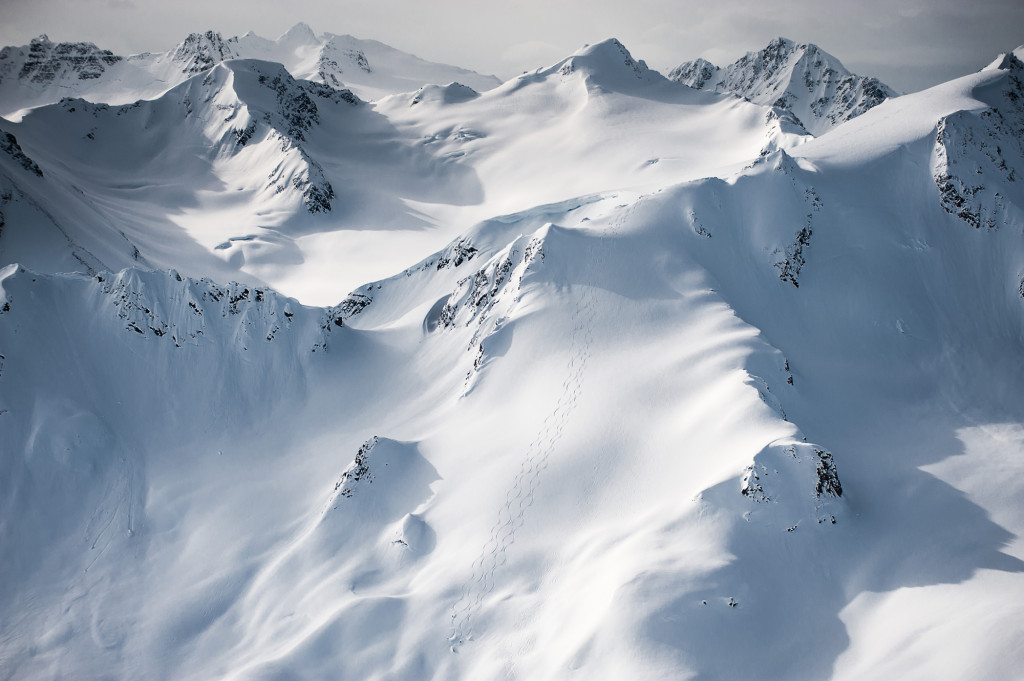Pushing the Limits – Balancing Risk in the Backcountry

Photo – Dave Silver
Is there anything better than laying down fresh turns on a snow covered peak far removed from the hustle and lineups of a ski resort? Well, maybe doing it from a helicopter is better…but getting up there on your own steam is a reward in and of itself. Going into the backcountry is not without risk. For those of us who spend time in the mountains, managing that risk is the key to staying safe and having a good time.

Photo – D’Arcy McLeish
Backcountry skiing and riding is the fastest growing segment of the snow sports industry. A result of that is more people are heading into the mountains, searching for those hard to reach places, away from the relative safety and rescue infrastructure of the local ski resort or guiding outfit. This is great and it’s nice to see that increase. Backcountry skiing is one of the best ways to experience the mountains in all their glory. But the down side to that growth is the increase in exposure to the very real risks in backcountry skiing and riding. In British Columbia, for instance, SAR groups, predominantly made up of volunteers, are seeing an increase in call outs because a lot of the folks heading into the mountains don’t have the knowledge and experience to manage their risk properly. This is true in a lot of other places, from Utah to Europe to South America to New Zealand.

Photo – Dave Silver
So how do you manage that risk? I think before answering that question it’s important to look at what those risks are. As a rescue professional who occasionally has to respond to places beyond the boundary of the resort where I ski patrol, one thing I see is a lack of awareness of what can happen when things go wrong out there. It’s not just avalanche danger. A myriad of things can happen in the backcountry that can immediately turn an otherwise blissful day of skiing into an absolutely brutal epic. Even a small injury, like a sprained ankle, maybe from clipping a rock or going for a tumble can complicate your day. If someone in your group gets hurt and can’t bear weight, how will you get them out? What is your plan if you get caught in a whiteout? What if someone has a gear malfunction like a broken binding or a tow piece on a ski boot that’s broken off? All of these things, which at a ski resort are relatively easy to deal with become nightmares when you are out in the backcountry.

Photo – Dave Silver
It’s important to realize the difference of skiing at a resort (or a heli/cat-ski operation) and skiing in the backcountry. Ski resorts have ski patrollers, toboggans, lifts, snowmobiles; there is a huge safety infrastructure in place to deal with things going wrong. At a heliski or catski operation it’s similar; trained guides, ninjas in the mountains, have your back at all times. Helicopters, snowcats, satphones, radios…there again is a safety net to get you out of trouble.

Photo – Dave Silver
Just being aware of what can happen out there is the first step. The next is to learn about what to do when these things do happen. And believe me, they will. Things go wrong out there. So how do you get ready? The simple answer is training and education. Avalanche, wilderness first aid, crevasse rescue and ski mountaineering courses are all good places to start. Better yet, hire a guide. But all of these things are essential before motoring out into the unknown with your friends.

Photo – Dave Silver
Finally, managing risk is about knowing when to go. Check the weather and the avalanche hazard. Understand where you are going and think about how you will get out if something goes wrong. Too often people head out into the mountains thinking everything will be ok. While it’s great to stay positive, understand that sometimes things go wrong and being able to make the right decisions, at the right times, especially when you’re faced with injuries, avalanches or other hazards is critical to not only enjoying yourself, but staying alive as well.
Be safe, ski hard and take a course.


